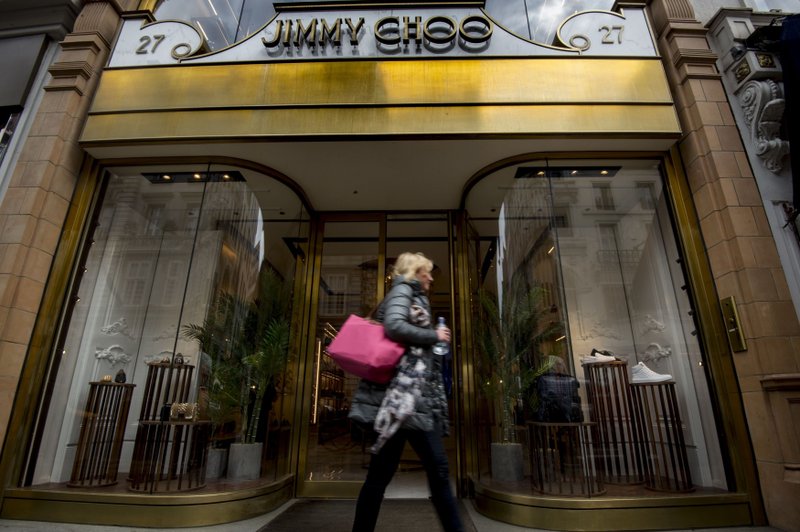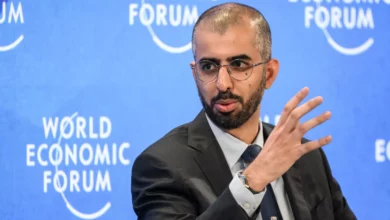
Stepping into the Louvre Abu Dhabi, one of the first artworks a visitor sees is a two-headed Neolithic statue from Jordan, one of the oldest known in human history.
That duality — looking back and toward the future, encompassing both East and West — is a theme that extends throughout the new museum, which is opening to the public on Saturday after a decade of delays and questions over laborers’ rights.
The conservative mores of Abu Dhabi, the capital of the United Arab Emirates that’s more buttoned-up than freewheeling Dubai, can be seen in the relative absence of pieces depicting nudity. Still, artwork at the new Louvre offers a brief history of the world and its major religions, not shying away from Judaism in a country that officially does not recognize Israel.
“Here at the Louvre Abu Dhabi, we’ve accomplished history,” Mohamed Khalifa al-Mubarak, the chairman of Abu Dhabi Tourism and Culture Authority, said at a ceremony for journalists on Monday. “This museum is a lot more than just a museum.”
The modernist museum, designed by French architect Jean Nouvel, sits under a honeycombed dome of eight layers of Arab-style geometric shapes.
It draws the lapping waters of the Persian Gulf into its outer corridors, allowing individual beams of light that pass through the roof to strike the surface and cast dancing reflections across the white walls. At night, light inside pours out like tiny little stars from a salt shaker against the city’s skyline.
“I imagine this metaphor of the sky, cosmic, cosmographic, with a random system like the stars itself,” Nouvel told The Associated Press. “I imagine that with not a lot of lighting, just a little bit to create a kind of rain of light.”
That rain has been a long time coming in this desert country, a federation of seven sheikhdoms on the Arabian Peninsula. Authorities first announced the Louvre Abu Dhabi project in 2007 as Dubai feverishly built the world tallest building and other wonders.
Today, much of Saadiyat Island, envisioned as a cultural district anchored by the museum, is still empty. A planned Middle East outpost of the Guggenheim remains unbuilt , with just a poured foundation on the salt flood plain.
Part of the reason is the drop in global energy prices from over $100 a barrel in 2014 to around $30 in early 2016. Officials in Abu Dhabi have not disclosed how much it cost to build the museum.
What is known is that Abu Dhabi agreed to pay France $525 million for the use of the “Louvre” name for the next 30 years and six months, plus another $750 million to hire French managers to oversee the 300 loaned works of art. A center at Paris’ Louvre now bears the name of the late UAE President Sheikh Zayed bin Sultan Al Nahyan, which was also part of the deal.
During construction, the project faced intense criticism over conditions faced by laborers, who faced low pay, long hours and hot conditions. A worker was killed in an accident in 2015 while another died of “natural causes” in 2016, according to Abu Dhabi authorities.
Hundreds working on projects on the island, including the Louvre, also were deported or lost their work visas for launching strikes over their conditions, according to according to a 2015 Human Rights Watch report . Labor strikes are illegal in the UAE.
Jean-Luc Martinez, the president-director of the Louvre in Paris, contends the museum spoke “very frankly” about laborer conditions. He described the museum as a bridge between Asia, Africa and Europe.
“We are not a European museum,” he told the AP. “It’s a place to see the world from Abu Dhabi.”
That begins in the first gallery, where the floor bears an outline of the UAE with the names of different world cities in Arabic, China, English and Hindi. Different cultures face each other in exhibits: for example, a French suit of armor is positioned to look directly across from a Japanese warrior’s outfit.
The museum also makes a point to put the world’s religions side by side.
In one exhibit, a Jewish funerary stele from France in 1250 sits next to a Tunisian Muslim’s funerary steel and a Christian archbishop’s stone epitaph from Tyre, Lebanon. A painted French stone statue of Virgin and Child stands by a section of a Syrian Quran dating to around 1250, open to a page recounting the night during the holy month of Ramadan when Muslims believe the holy book was revealed to the Prophet Muhammad.
In a darkened room, a page from the Blue Quran, one of the oldest ever found, sits near a Gothic Bible, Buddhist sutras and a Torah from Yemen dating to 1498.
In a Middle East still torn by religious and sectarian conflict, whether between Sunni and Shiite or Israelis and the Palestinians, simply putting them side by side is a major statement.
“By addressing their message to all humanity without distinction, Buddhism, Christianity and Islam transcended local cultural characteristics and deeply transformed ancient societies,” one placard reads. “These religions shared with Judaism the concept of monotheism but diverged on the subjects such as the representation of the divine.”
Nudity, however, is only lightly represented, either in bare breasts on an Italian dish or nude bronze ballerina statuettes by Edgar Degas, seemingly dancing in the line of sight of James McNeill Whistler’s famed painting of his mother. Whistler’s painting joins a woman’s portrait on wood by Leonardo da Vinci, two works by Pablo Picasso and a hot-pink Andy Warhol image of an electric chair.
For now at least, the museum’s exhibit ends with an installation by Chinese artist Ai Weiwei called “A Foundation of Light,” an illuminated work of steel and glass that recalls the museum’s gleam at night.



